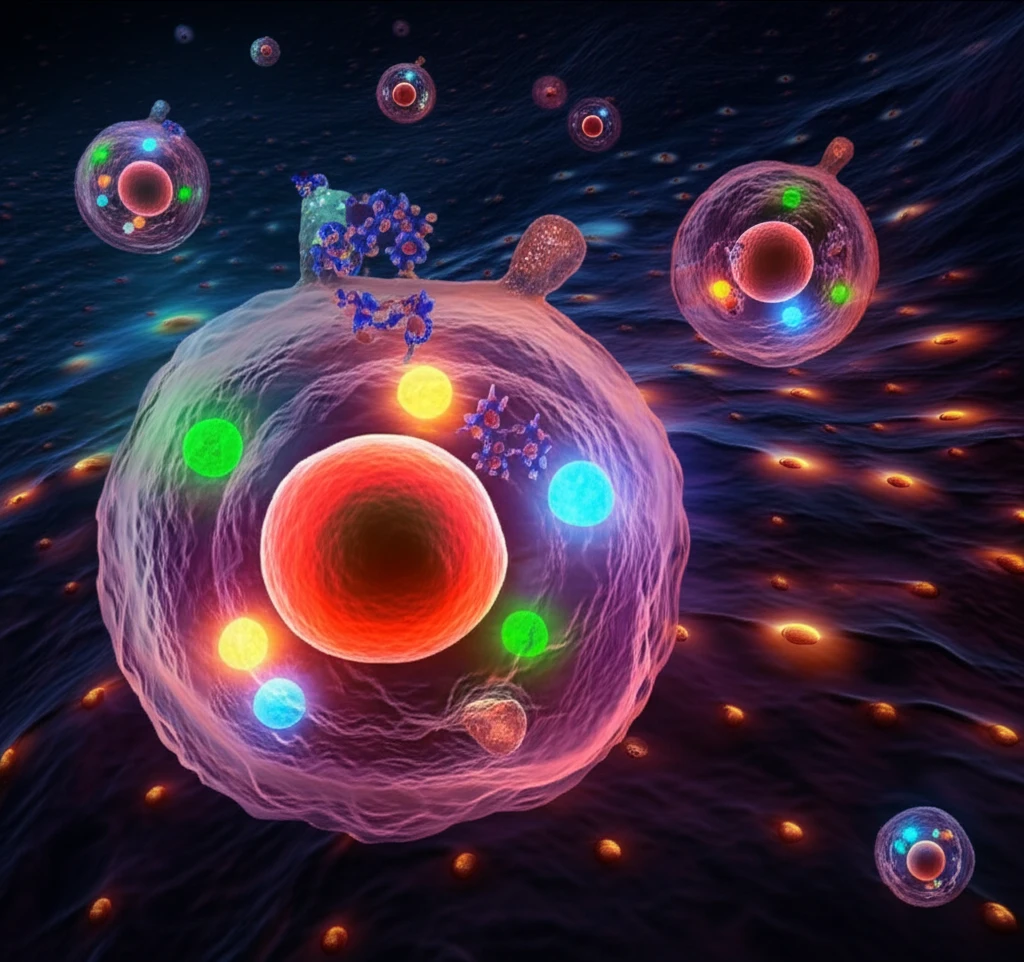
Lung Cancer Breakthrough: Can This Combination Therapy Stop Cancer's Spread?
"New research explores how combining Apricoxib and IL-27 can enhance the fight against lung cancer by targeting a key process called epithelial-mesenchymal transition (EMT)."
Lung cancer remains a significant global health challenge, with its ability to spread, or metastasize, being a primary concern. The process that enables this spread is called epithelial-mesenchymal transition (EMT), where cancer cells transform and become more mobile and invasive. Understanding and targeting EMT is crucial for developing effective cancer treatments.
Excitingly, new research is shedding light on potential strategies to combat EMT in lung cancer cells. Scientists have been investigating the combined effects of two agents: Apricoxib, a selective COX-2 inhibitor, and IL-27, an antitumor cytokine. The focus is on how these agents, when used together, can influence key signaling pathways that control EMT.
This article will explore the findings of a recent study that delves into the combined power of Apricoxib and IL-27. We'll break down the science, clarify the roles of important molecules like STAT1 and STAT3, and explain how this combination therapy could potentially offer a new approach to preventing lung cancer metastasis.
Apricoxib and IL-27: A Powerful Duo Against Lung Cancer Spread?

The study's core findings revolve around how Apricoxib and IL-27 interact to influence EMT. Researchers discovered that IL-27 activates both STAT1 and STAT3 pathways within lung cancer cells. While both are activated, it's the balance between them that seems crucial. A dominant STAT1 pathway appears to suppress the oncogenic effects of STAT3, leading to the inhibition of EMT.
- Increased STAT1 Activation: Apricoxib boosts the activity of STAT1 when combined with IL-27.
- Decreased STAT3 Activation: Apricoxib reduces the activity of STAT3, a known promoter of cancer progression.
- Reversal of EMT: The combination leads to decreased expression of mesenchymal markers (like N-cadherin and vimentin) and increased expression of epithelial markers (like E-cadherin).
- Reduced Cell Migration: Cancer cells treated with the combination therapy showed a significantly reduced ability to migrate, a key step in metastasis.
A New Hope for Preventing Lung Cancer Spread?
This research offers a promising glimpse into a new strategy for preventing lung cancer metastasis. By combining Apricoxib and IL-27, scientists can potentially target EMT, a critical process in cancer spread, through a STAT1-dominant pathway.
While these findings are encouraging, it's important to remember that this is early-stage research. Further studies are needed to fully understand the mechanisms involved, optimize the combination therapy, and evaluate its effectiveness in clinical trials. The A549 cell line was also observed to express minimal COX-2 and endogenous PGE2. The A549 cell line was genotyped to confirm identity of the cell line.
However, this study provides a strong foundation for future research and offers a potential new avenue for developing more effective lung cancer treatments. Targeting EMT with a combination approach could significantly improve outcomes for patients facing this challenging disease.
